Crossovers have become the vehicles of choice for a large number of consumers seeking the best of both worlds: the space, height, and utility of an SUV combined with the driving characteristics of a sedan. They offer a balance between practicality and comfort, catering to families, adventure seekers, and urban drivers alike.
However, despite their widespread appeal, crossovers differ significantly when it comes to handling. Some deliver agile, sedan-like driving experiences, while others leave drivers feeling disconnected from the road, with steering and suspension systems that can feel loose, vague, or even boat-like.
The handling of a vehicle is one of the most critical aspects of the driving experience, affecting everything from safety to comfort, to sheer enjoyment on the road. While most crossovers are designed to be a compromise between ride comfort and performance, some tilt heavily toward comfort, often at the expense of agility.
This often results in what could be described as “boat-like” handling, where the vehicle feels soft, overly cushioned, or unstable, particularly during cornering or more dynamic driving situations.
These vehicles, although excellent in terms of providing a comfortable, smooth ride, may leave drivers feeling detached and less in control, particularly when navigating curves, sharp turns, or congested city streets.
On the other hand, certain crossovers stand out for their exceptional handling characteristics, more akin to sedans. These models manage to combine the higher driving position and utility of an SUV with the responsiveness and driving dynamics that are usually reserved for smaller, sportier vehicles.
Such crossovers are designed with well-tuned suspension systems, responsive steering, and a focus on driving engagement, delivering a more direct, connected feel on the road. For those who seek the practicality of a crossover without sacrificing the driving enjoyment of a sedan, these models provide a perfect solution.
In this article, we will explore two sides of the crossover spectrum. First, we’ll delve into five crossovers that handle like sedans, providing an agile and responsive driving experience. These vehicles are ideal for those who want the versatility of a larger vehicle without giving up the fun-to-drive characteristics of smaller cars.
Then, we’ll take a look at five crossovers that handle like boats, with a more relaxed and cushioned ride, but at the cost of precision and road-holding ability. These crossovers are designed for comfort, with handling that can sometimes feel floaty or detached, especially when cornering or taking on tight maneuvers.
The world of crossovers is vast, and handling is just one of many factors that buyers must consider when choosing a vehicle.
But whether you prefer a crossover that feels nimble and car-like or one that offers a plush, laid-back ride, understanding these distinctions can help you make an informed decision about which crossover suits your driving preferences and lifestyle.
Let’s take a closer look at the models that represent each end of this spectrum, starting with the crossovers that handle like sedans.
Also Read: 5 Cars With Rear Seats That Slide and 5 That Should
5 Crossovers That Handle Like Sedans
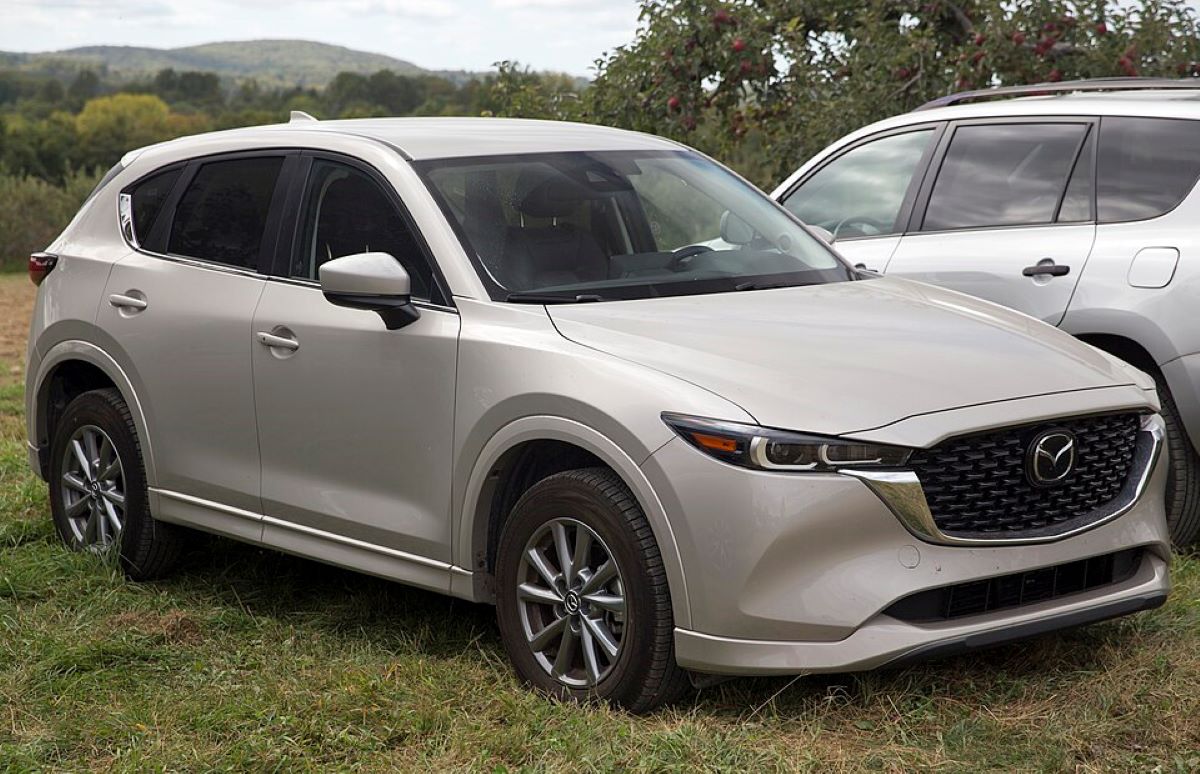
1. Mazda CX-5
The Mazda CX-5 stands out in the crossover market because it provides a driving experience that is remarkably sedan-like.
It combines sleek styling with exceptional handling, making it one of the most fun-to-drive vehicles in its segment. The CX-5’s well-balanced chassis and precisely tuned suspension system allow it to handle tight corners and winding roads with ease.
When behind the wheel, you immediately notice the car-like agility and responsiveness, with steering that offers excellent feedback, making the driver feel connected to the road.
The steering is light, yet precise, which is a rare quality in crossovers that often have vague or overly-assisted steering. This makes it especially enjoyable when navigating through sharp turns or during spirited drives along scenic routes.
What truly sets the CX-5 apart from other compact crossovers is its focus on a dynamic driving experience without sacrificing comfort. Mazda engineers have managed to design a vehicle that maintains a composed ride, even when driving on bumpy or uneven surfaces.
The suspension absorbs most road imperfections while maintaining excellent control and stability, which is something that many other vehicles in this class can’t achieve.
Whether you’re cruising down the highway or tackling curvy backroads, the CX-5’s ride quality remains smooth without losing the connection to the road.
It feels planted, giving the driver a sense of control that is typically reserved for sedans or smaller cars.
The handling characteristics make it particularly enjoyable for those who prefer an active, engaging driving experience without the heaviness often associated with larger crossovers or SUVs.
Additionally, the CX-5 comes with a range of engine options, including a turbocharged 2.5-liter engine that offers plenty of power for acceleration and passing maneuvers, all while maintaining excellent fuel economy.
The responsive throttle and refined transmission make driving more enjoyable, ensuring the crossover can tackle both city traffic and highways with ease.
Mazda’s emphasis on “Zoom-Zoom” — the brand’s mantra for a spirited, enjoyable driving experience — truly comes to life in the CX-5.
This crossover is perfect for individuals who desire the utility of a larger vehicle but don’t want to sacrifice the fun-to-drive, agile characteristics of a sedan. Its excellent driving dynamics and strong value proposition make the CX-5 a top choice for those who love the feel of a car but need the practicality of a crossover.

2. BMW X3
BMW has always been synonymous with sporty, performance-driven vehicles, and the BMW X3 is no exception. The X3 is a luxury crossover that feels every bit as nimble and responsive as a well-tuned sedan.
What makes the X3 stand out is its incredible handling capabilities, which are directly influenced by BMW’s commitment to producing vehicles with a focus on driving dynamics.
The X3 features sharp, precise steering that allows the driver to feel fully connected to the road, giving a level of engagement that is often missing in larger SUVs.
This makes it an excellent choice for drivers who want the utility of a crossover but don’t want to give up the agile handling of a car. It handles corners with ease, and its suspension system does a remarkable job of absorbing imperfections without compromising its sporty feel.
When it comes to performance, the BMW X3 doesn’t disappoint. It’s available with a range of powertrains, including the turbocharged four-cylinder engine and the more powerful six-cylinder options in the M40i and X3 M variants.
The latter offers thrilling acceleration and handling that rival sports sedans, with a robust engine note and a performance-oriented suspension system that keeps the vehicle firmly planted on the road.
BMW’s renowned xDrive all-wheel-drive system further enhances the X3’s stability and handling, ensuring that the vehicle remains responsive even in adverse conditions.
Whether you’re driving on a rain-soaked highway or taking on twisty mountain roads, the X3 offers a confident and connected driving experience that few crossovers can match.
Additionally, the X3 is equipped with an adaptive suspension system, which allows the driver to switch between comfort and sport modes. In sport mode, the suspension stiffens, making the X3 even more engaging to drive, with tighter cornering and improved body control.
This level of customization allows the driver to tailor the driving experience to their preferences, whether they’re seeking a more comfortable ride for daily commutes or a more spirited drive on the weekends.
Inside, the cabin is quiet and luxurious, further enhancing the sedan-like experience with high-end materials and top-tier technology.
The X3 truly embodies the best of both worlds: the versatility of a crossover combined with the performance-oriented driving dynamics of a luxury sedan. It’s ideal for those who demand both practicality and thrilling driving performance.
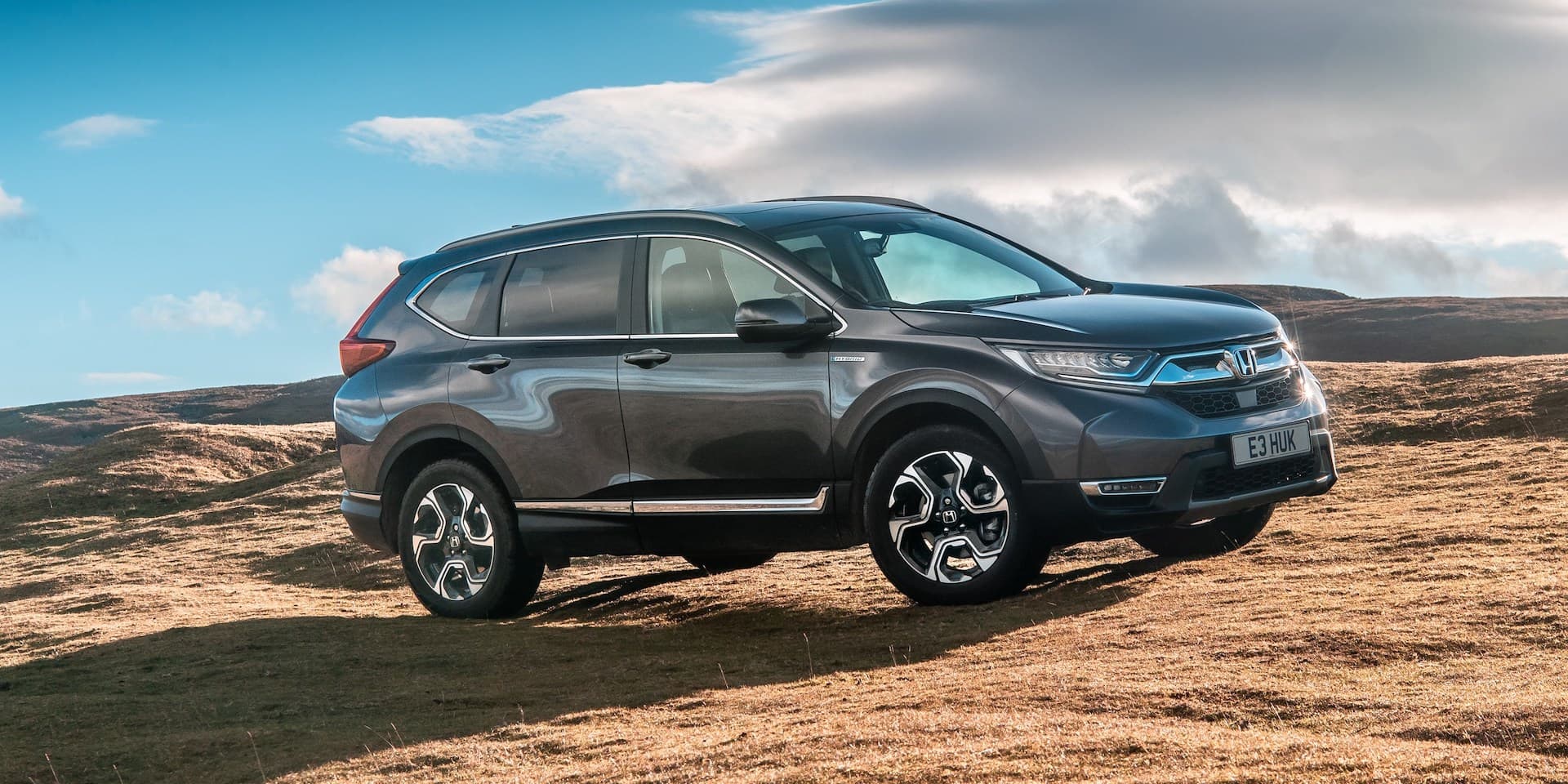
3. Honda CR-V
The Honda CR-V is one of the most popular compact crossovers in the market, known for its practicality, reliability, and surprisingly agile handling.
While many crossovers prioritize comfort over performance, the CR-V manages to strike a perfect balance between the two. The CR-V’s steering is light and responsive, making it easy to maneuver in tight spaces, while still offering enough feedback to ensure the driver feels in control.
When navigating city streets or highways, the CR-V provides a smooth and composed ride, absorbing bumps and road imperfections without feeling overly soft or floaty. This level of comfort and control gives the CR-V a sedan-like driving feel, which is rare in the crossover segment.
The CR-V’s suspension system is well-tuned to provide a firm yet comfortable ride. It’s designed to absorb road imperfections effectively while keeping the vehicle well-planted during sharp turns. As a result, the CR-V feels more agile than many of its competitors, which often lean heavily or feel top-heavy due to their higher ride height.
The CR-V’s lower center of gravity contributes to its sedan-like handling characteristics, making it more fun to drive than many other vehicles in its class. Whether you’re cruising down a straight highway or taking on a twisty road, the CR-V remains composed and confident, providing a driving experience that’s closer to a sedan than a typical crossover.
Under the hood, the CR-V offers a 1.5-liter turbocharged engine, providing a good balance of power and efficiency. While it’s not the most powerful engine in its class, it’s more than sufficient for daily driving needs, offering smooth acceleration and easy highway merging.
The CVT (continuously variable transmission) complements the engine by providing seamless acceleration without any noticeable shifts, further enhancing the sedan-like driving experience.
Fuel economy is also impressive, making the CR-V a practical choice for drivers who want a fun-to-drive crossover without compromising on fuel efficiency. The Honda CR-V is a well-rounded vehicle that delivers the agility and responsiveness of a sedan while offering the practicality and comfort of a crossover.

4. Audi Q5: Sporty, Yet Refined
The Audi Q5 is a luxury crossover that delivers an exceptional driving experience, with handling that feels more like a sports sedan than a traditional SUV. Audi has designed the Q5 to offer a precise, controlled ride, combining athleticism with refinement.
The steering is direct and responsive, providing the driver with an immediate sense of connection to the road. Unlike many larger crossovers, the Q5 feels agile and composed, effortlessly taking corners with minimal body roll.
The available adaptive air suspension ensures that the vehicle can maintain a comfortable ride while still delivering the sporty dynamics that drivers expect from Audi.
Whether you’re driving in urban settings or tackling winding country roads, the Q5 provides a driving experience that feels more connected and athletic than its size might suggest.
The Q5 comes with a choice of powertrains, including a turbocharged four-cylinder engine and a more powerful V6 in the SQ5 variant. Both engines are paired with Audi’s Quattro all-wheel-drive system, which enhances traction and stability, allowing the Q5 to maintain its poise in various driving conditions.
The turbocharged four-cylinder engine provides ample power for daily driving, while the SQ5’s V6 engine delivers a more thrilling performance, with rapid acceleration and impressive passing power.
The eight-speed automatic transmission is smooth and responsive, making the Q5 a joy to drive in both urban and highway settings.
One of the key features of the Audi Q5 is its customizable driving experience. With the optional adaptive suspension, drivers can switch between comfort and sport modes to suit their needs. In sport mode, the Q5 tightens up, reducing body roll and improving handling for a more engaging and responsive drive.
The refined interior, with its luxurious materials and advanced technology, further enhances the sedan-like experience.
Whether you’re looking for a crossover that provides athleticism or one that delivers a smooth, comfortable ride, the Audi Q5 offers the best of both worlds. It’s the ideal choice for drivers who want a crossover with sporty handling but don’t want to sacrifice luxury or comfort.
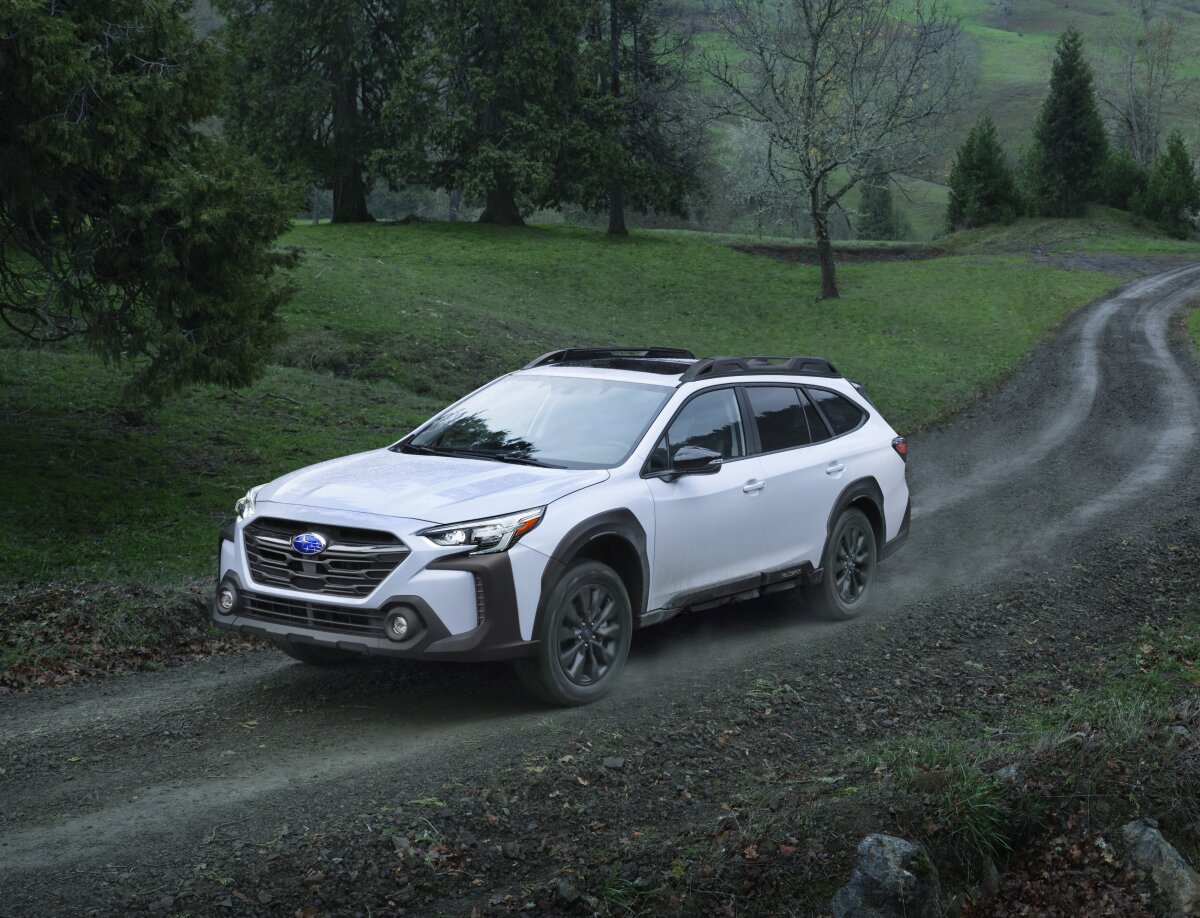
5. Subaru Outback
The Subaru Outback is an unusual but highly capable vehicle that bridges the gap between a wagon, an SUV, and a crossover.
hanks to its lower stance and well-tuned suspension, the Outback offers handling that is surprisingly sedan-like for a vehicle with higher ground clearance.
The Outback feels responsive and stable, with a low center of gravity that helps minimize body roll during sharp turns. Its symmetrical all-wheel-drive system adds to its stability, allowing the vehicle to grip the road firmly in various weather conditions.
This makes the Outback a great option for those who want an adventurous crossover with the handling characteristics of a car. Whether you’re driving on highways, off-road, or in inclement weather, the Outback delivers confident handling and a smooth ride.
The Outback’s suspension system strikes a balance between comfort and agility, offering a smooth ride over rough terrain while maintaining composure on paved roads. The vehicle’s higher ground clearance doesn’t detract from its handling prowess; in fact, it enhances the ride, making it ideal for a variety of driving conditions.
When taking on winding roads or tight turns, the Outback feels planted and composed, offering a driving experience that rivals that of a sedan. This makes it a top choice for drivers who need the versatility of a crossover but prefer the driving dynamics of a traditional car.
Subaru’s commitment to practicality is evident in the Outback’s design, but it doesn’t sacrifice driving enjoyment for functionality.
The Outback’s efficient 2.5-liter engine provides a smooth and responsive driving experience, ensuring easy acceleration and comfortable highway cruising. The cabin is quiet and well-insulated, adding to the sedan-like feel.
Its combination of all-wheel drive, spacious interior, and car-like handling makes the Outback a top contender for those looking for a versatile, enjoyable-to-drive vehicle.
Whether you’re commuting to work, embarking on a road trip, or venturing off the beaten path, the Subaru Outback handles with confidence and provides a smooth, sedan-like ride.
5 Crossovers That Handle Like Boats
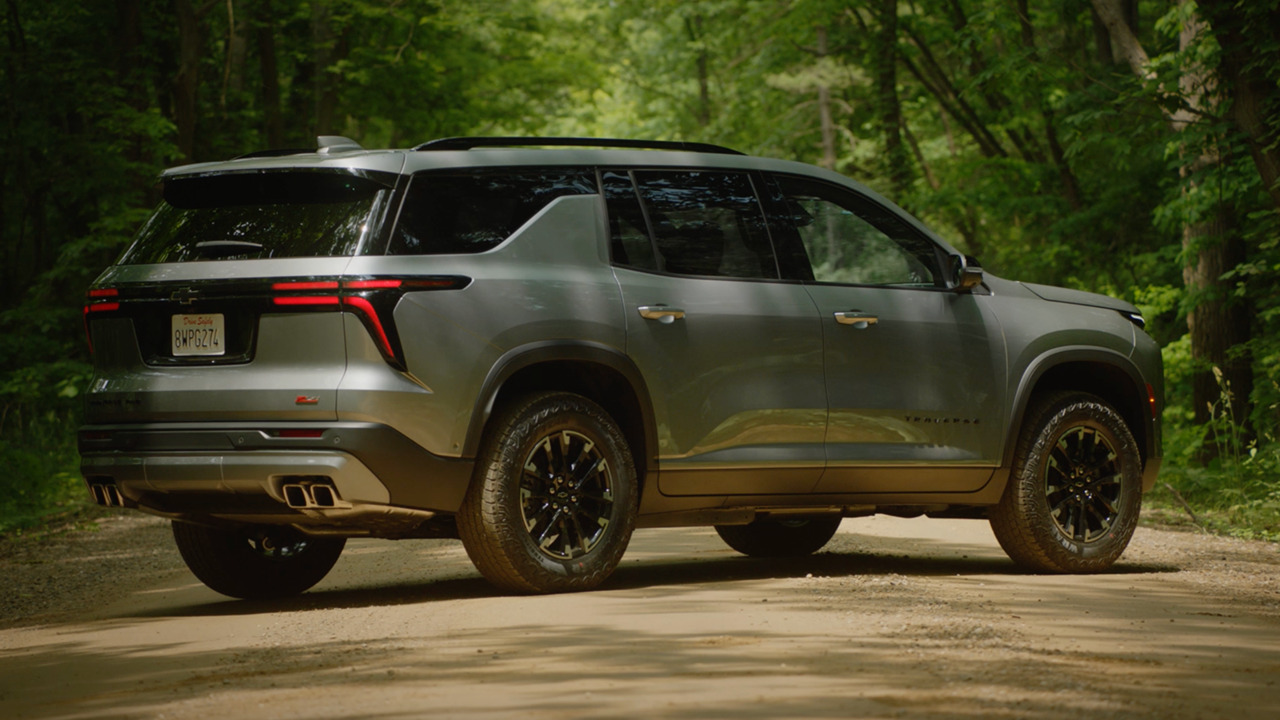
1. Chevrolet Traverse
The Chevrolet Traverse is a large, three-row crossover designed to carry families and cargo with ease. While it excels in terms of space and comfort, it suffers from handling characteristics that can be described as “boat-like.”
Due to its significant size and weight, the Traverse doesn’t offer the agility or responsiveness typically associated with smaller crossovers or sedans.
One of the key drawbacks is its relatively vague steering, which makes it difficult for the driver to feel fully connected to the road.
The steering lacks precision and often feels over-assisted, which can be a problem when trying to maneuver in tight spaces or navigate sharp corners. The lack of feedback through the steering wheel can lead to a feeling of detachment, which detracts from the driving experience.
Additionally, the Traverse’s suspension system is tuned more for comfort than handling, which, while great for smooth rides on highways, contributes to a significant amount of body roll during tight turns or when the vehicle is pushed hard.
This body roll, especially in comparison to more agile vehicles, makes the Traverse feel like it’s floating over the road rather than hugging it.
The vehicle’s tendency to lean heavily in turns can make it feel less stable, particularly on winding roads or during high-speed cornering. While the Traverse can handle long-distance cruises and highway commutes with ease, its handling dynamics can make more spirited driving feel cumbersome and less enjoyable.
If you’re looking for a crossover that provides a more engaging driving experience, the Traverse might not be your best bet, as its boat-like handling can leave you wishing for a more connected, responsive ride.
Despite its handling shortcomings, the Traverse remains a popular choice for families thanks to its spacious three-row configuration, advanced safety features, and smooth highway ride. However, for those who seek a more dynamic driving experience, the Traverse’s boat-like handling can be a dealbreaker.
For drivers who rarely push their vehicle to the limits or who mostly use it for everyday commuting and family trips, the Traverse’s comfortable, if somewhat unwieldy, handling might be more than enough.
In the end, its size and focus on comfort ultimately outweigh the lack of handling precision, making it an ideal choice for those who prioritize passenger comfort and space over nimble, sporty driving dynamics.
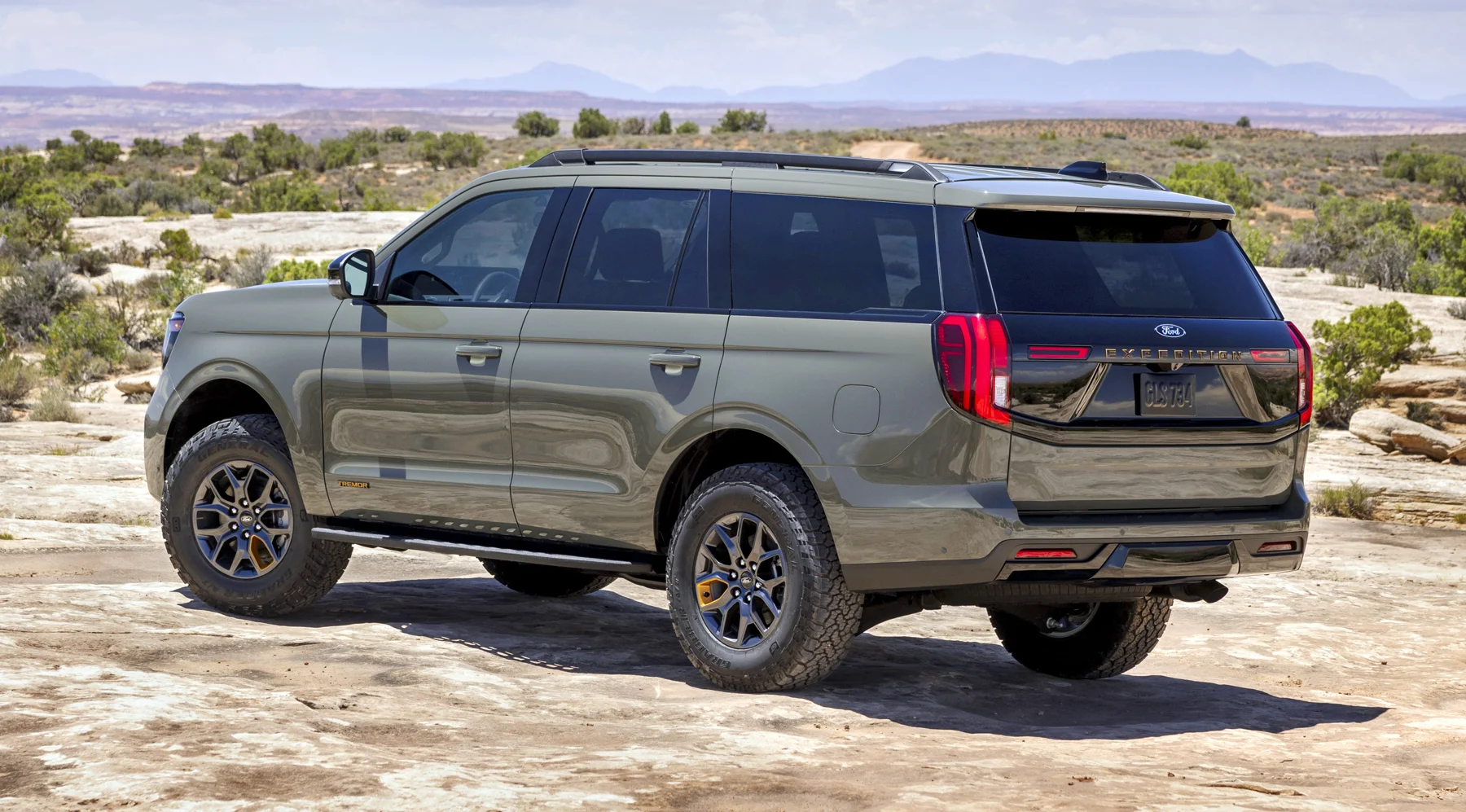
2. Ford Expedition
The Ford Expedition is one of the largest full-size crossovers (or SUVs) on the market today, and its size has a significant impact on its handling.
When driving the Expedition, you’re constantly reminded that you’re in a heavy, towering vehicle, and this leads to a driving experience that feels more akin to piloting a boat than a car.
Despite the powerful engine options and the refinement of the vehicle, its large footprint and weight make it feel sluggish and cumbersome when taking tight corners or navigating city streets.
The steering is heavy and often unresponsive, making the vehicle difficult to maneuver in tight spaces. It’s not unusual to feel a lack of precision when trying to steer the vehicle, particularly when you’re turning at lower speeds or parking in confined areas.
Furthermore, the Ford Expedition’s suspension system is designed for comfort rather than sport, which means that while the ride is smooth, it can feel overly soft when cornering or during sharp maneuvers.
The Expedition’s tendency to lean heavily during turns and the significant body roll it experiences while navigating curves can make it feel more like a ship than a crossover.
Even at higher speeds, the Expedition can feel somewhat unsteady and top-heavy, especially when driving on winding roads or when making quick lane changes. This can make the vehicle feel detached from the road, which is not ideal for drivers seeking a more engaging or responsive driving experience.
The Ford Expedition, with its massive size and rugged capabilities, is an excellent choice for towing and hauling heavy loads, but it’s not a vehicle built for agile handling.
It shines when it comes to comfort and providing space for passengers, making it an excellent choice for families or those who need a workhorse vehicle for road trips.
However, if you’re someone who enjoys a more connected, car-like driving experience, the Expedition’s boat-like handling could leave you frustrated, especially on winding roads or in more urban environments where agility is essential.
The Expedition is better suited to those who value comfort, towing capacity, and interior space over sharp handling or sporty driving dynamics.
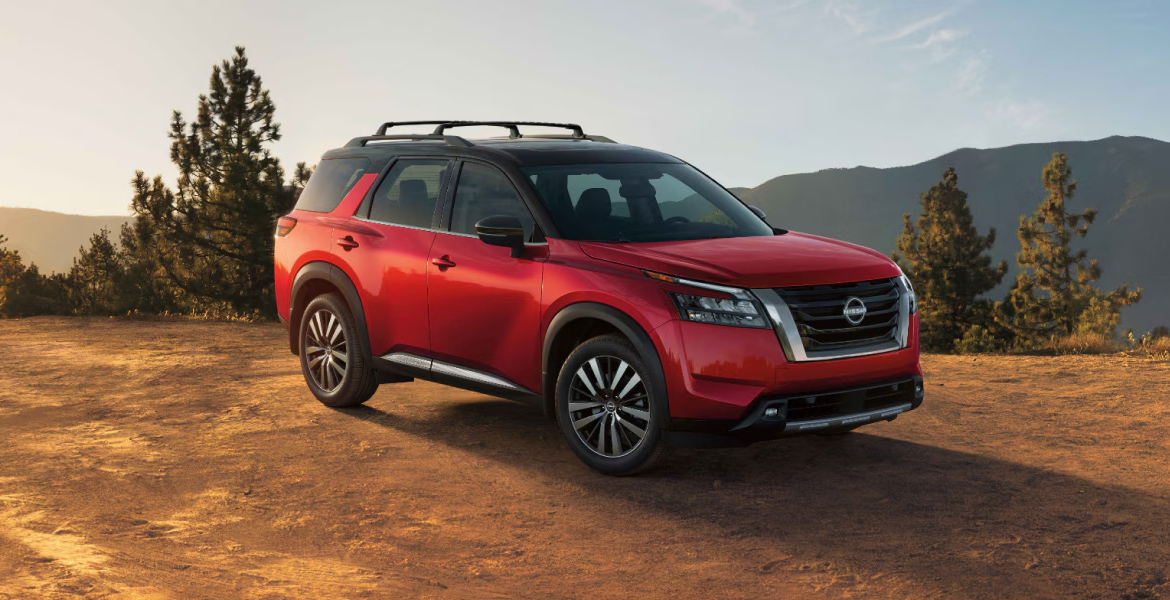
3. Nissan Pathfinder
The Nissan Pathfinder is a family-oriented crossover that focuses on comfort and practicality, but when it comes to driving dynamics, it falls short of the agility seen in many of its competitors.
The Pathfinder’s handling can be best described as “boat-like” because of its significant body roll and soft suspension system, which prioritizes a smooth, cushioned ride over sharp cornering or responsive steering.
While the Pathfinder offers a comfortable ride for passengers, especially on long road trips, it lacks the precise handling that many drivers seek in a crossover.
The steering, in particular, can feel overly light and uncommunicative, which diminishes the driving experience and creates a sense of detachment between the driver and the road.
The Pathfinder’s high center of gravity and soft suspension setup contribute to its boat-like handling characteristics. When taking sharp turns or navigating winding roads, the Pathfinder tends to lean heavily, and the body roll becomes especially noticeable.
This lack of composure during cornering can make the vehicle feel less stable and harder to control, especially at higher speeds.
In addition, the vehicle’s large size and weight further exacerbate the feeling of sluggishness and reduced responsiveness, particularly in tight driving situations. This makes the Pathfinder less enjoyable to drive when compared to smaller, more agile crossovers or sedans.
However, the Pathfinder’s primary appeal lies in its comfort, spaciousness, and off-road capabilities, which are more important to many buyers than its handling characteristics.
The vehicle’s spacious interior, three-row seating, and ample cargo capacity make it an excellent choice for families who need a versatile vehicle for long drives or weekend getaways.
Its off-road capabilities, with available all-wheel drive, provide peace of mind for those who want to venture off the beaten path.
But for those who enjoy a more responsive, dynamic driving experience, the Pathfinder’s boat-like handling may not meet their expectations. While the Pathfinder excels in other areas, its handling is a major point of weakness for drivers who prioritize a more connected, agile ride.
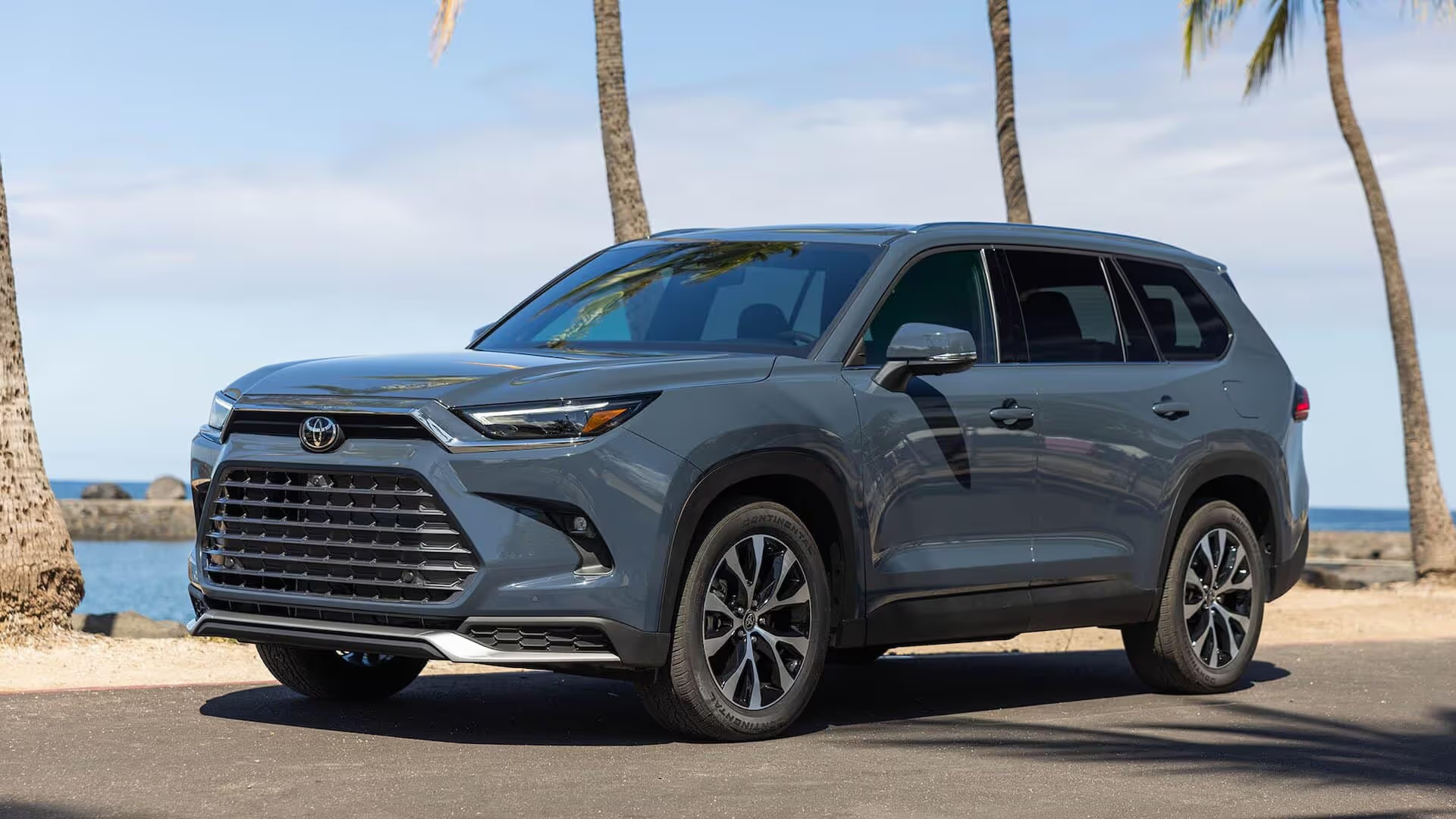
4. Toyota Highlander
The Toyota Highlander is a midsize crossover that offers a comfortable ride and a well-rounded set of features, but when it comes to handling, it can feel somewhat cumbersome and unrefined. The Highlander’s steering is light and lacks the precision typically found in more agile crossovers or sedans.
When navigating winding roads or taking sharp turns, the Highlander tends to exhibit significant body roll, making the driving experience feel less connected to the road.
The suspension system, tuned more for comfort than sport, doesn’t help matters, as it allows the vehicle to float over bumps and uneven surfaces, further contributing to the boat-like feel. This lack of agility can be frustrating for drivers who enjoy a more responsive, controlled driving experience.
Another factor that contributes to the Highlander’s boat-like handling is its relatively high center of gravity. This, combined with its soft suspension, results in a less stable and more floaty driving feel, particularly when cornering at higher speeds.
The body roll is especially pronounced during quick lane changes or sharp turns, making it feel as though the vehicle is leaning excessively.
While this is not necessarily an issue on straight highways or during casual city driving, the Highlander’s handling becomes less enjoyable when navigating winding roads or engaging in more spirited driving. For drivers who value precision and connection with the road, the Highlander’s lack of sharp handling can be a significant drawback.
Despite these handling shortcomings, the Highlander remains a popular choice for families due to its spacious interior, user-friendly technology, and strong reputation for reliability. It offers three rows of seating, plenty of cargo space, and a smooth ride that makes it ideal for long road trips and daily commutes.
However, its boat-like handling may not appeal to those who prefer a more engaging driving experience. The Highlander excels in comfort, practicality, and safety, but its lack of agility can leave driving enthusiasts yearning for more responsiveness and precision from their vehicle.
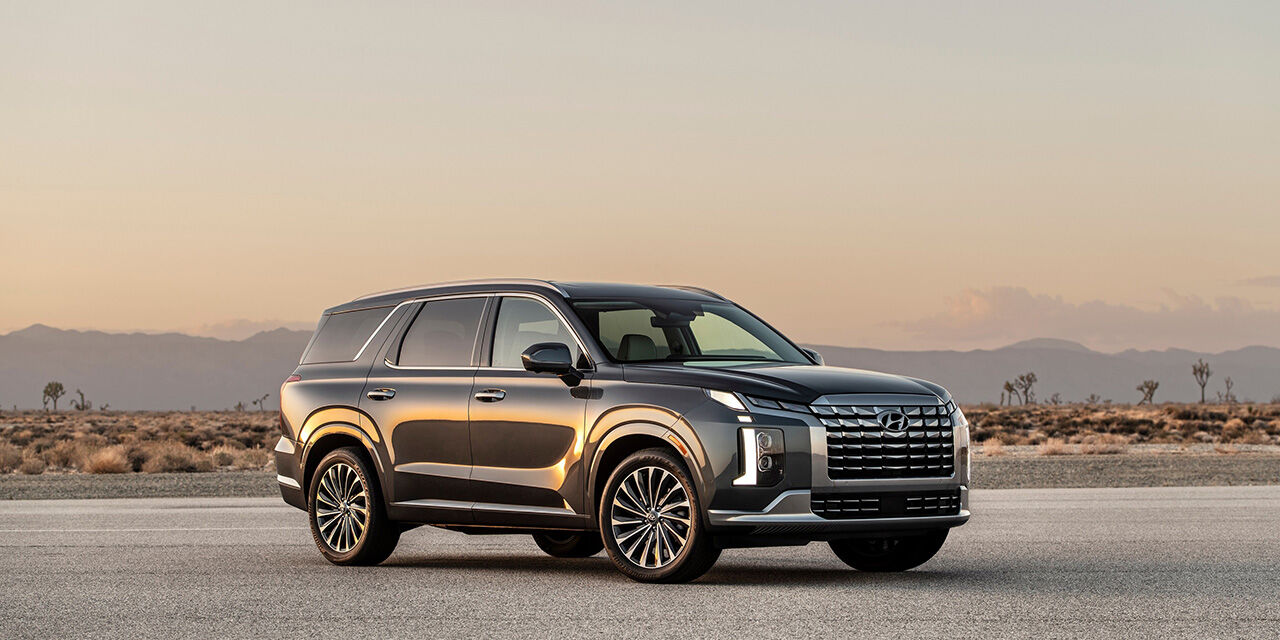
5. Hyundai Palisade: Big, Spacious, But Not Sporty
The Hyundai Palisade is a standout in the midsize three-row crossover category, offering a spacious, well-appointed interior and a smooth, comfortable ride. However, when it comes to handling, the Palisade’s large size and comfort-oriented suspension system make it feel somewhat sluggish and boat-like.
The steering is light and can feel a bit numb, providing limited feedback from the road. While this makes it easy to drive around town or on long highway stretches, it also means that the driver feels disconnected from the road, particularly when cornering or navigating tight spaces.
The soft suspension is designed to prioritize comfort, which results in noticeable body roll and a lack of composure when driving through sharp turns or sudden maneuvers.
The Palisade’s high ground clearance and substantial weight further contribute to its boat-like handling. While it can handle rough roads and off-road terrain reasonably well, its size and weight make it feel unwieldy on twisty, curvy roads.
The vehicle leans significantly in corners, and the soft suspension allows for an excessive amount of body movement, making it feel less stable and more like a boat than a car.
This lack of precision during more dynamic driving situations can be frustrating for those who are used to driving smaller, more agile vehicles. While the Palisade is a great option for families and those who need a spacious vehicle for long trips, it’s not the best choice for drivers seeking a more engaging and responsive driving experience.
Despite its boat-like handling, the Hyundai Palisade shines in other areas. It offers an upscale interior, with a quiet, comfortable cabin and a wealth of standard features. Its three-row seating provides ample space for passengers, making it an excellent choice for families.
The ride quality is also impressive, with the vehicle absorbing bumps and road imperfections with ease. However, if you’re someone who enjoys more spirited driving or values sharp handling, the Palisade’s comfort-focused suspension and handling characteristics may leave you disappointed.
While the Palisade is a fantastic family vehicle, its boat-like handling is one of its few drawbacks for drivers who seek a more connected, dynamic driving experience.
Also Read: 10 Trunk Designs That Let Water In When Open
In today’s automotive landscape, crossovers have firmly established themselves as the vehicle of choice for a diverse range of consumers. Their ability to offer the practicality and versatility of SUVs combined with the driving comfort of sedans has made them a dominant force in the market.
However, as we’ve explored, the handling dynamics of crossovers vary widely, and this can be a crucial deciding factor for many buyers. While some drivers prioritize a smooth, comfortable ride at the expense of handling precision, others desire a crossover that provides the thrill and agility often associated with sportier sedans.
The crossovers that handle like sedans, such as the Mazda CX-5, BMW X3, and Audi Q5, offer exceptional handling characteristics that rival smaller, more agile vehicles.
These models are ideal for drivers who seek a more dynamic and responsive driving experience, blending the utility of an SUV with the precision of a performance sedan.
With their sharp steering, composed suspension, and engaging driving dynamics, these crossovers stand out for their ability to provide a car-like experience without sacrificing the space and comfort that crossovers are known for.
They are perfect for individuals who value both practicality and the enjoyment of a spirited drive, making them ideal choices for those who navigate urban streets, winding backroads, and highways with equal enthusiasm.
On the other hand, the crossovers that handle like boats, such as the Chevrolet Traverse, Ford Expedition, and Nissan Pathfinder, excel in providing a cushioned, comfortable ride but may feel disconnected from the road when it comes to handling precision.
These vehicles are designed with a focus on comfort and space, often at the expense of agility and dynamic performance.
Their larger size, higher ride height, and softer suspension systems result in a relaxed, laid-back driving experience, making them excellent choices for families, long road trips, or those who require significant towing capacity.
While these crossovers may not deliver the same level of responsiveness or cornering stability as their more agile counterparts, they excel in areas such as interior space, ride comfort, and towing capability, making them ideal for those who prioritize comfort over handling.
In the end, the right crossover for you depends on your personal preferences, driving style, and needs. If you’re looking for a vehicle that blends the practicality of an SUV with sedan-like handling, models like the Mazda CX-5, BMW X3, and Audi Q5 may be exactly what you need.
These crossovers offer the best of both worlds, allowing you to enjoy a connected, engaging drive without sacrificing the space and versatility of a larger vehicle.
However, if you’re more interested in a smooth, cushioned ride for your family and prioritize comfort and utility over handling precision, vehicles like the Chevrolet Traverse, Ford Expedition, and Nissan Pathfinder may be more suited to your lifestyle.
Whatever your preference, the crossover segment has a wide array of options to cater to every type of driver, making it easier than ever to find the perfect blend of performance, comfort, and versatility.
